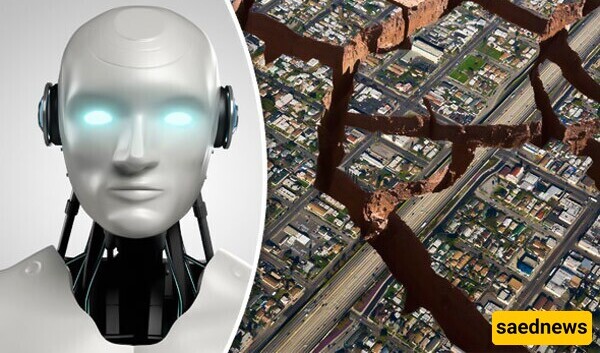Saad News: Beneath the Earth's surface lies a complex network of faults; places where large chunks of rock move beside, on top of, beneath, or inside each other.

According to Saad News political service, these movements occur at a speed equivalent to the growth of a nail until eventually, with a violent shake, the Earth trembles. Inevitably, destructive earthquakes will shake the Earth, and there is nothing that can be done to prevent them. However, understanding where these earthquakes are more likely to occur and what magnitude they may release helps human societies prepare. In other words, the best way to reduce the impact of these disasters is by creating underground maps, where each fault is identified and its behavior is monitored.
The Beginning of the Journey To create underground maps, researchers use seismographs on the Earth's surface—small devices that sense and record various vibrations, including earthquakes. Seismic waves are somewhat like music. By identifying the notes and rhythm changes, scientists can understand which "underground instruments" created these waves, where they are located, and how they behave during fractures. Of course, this task is very difficult, often slow, and sometimes inaccurate. The data are far more than experts can analyze on their own. These small earthquakes produce very faint seismic waves, which even the most skilled seismologists may struggle to distinguish from seismic data. However, in 2017, scientists came up with a brilliant idea. They observed that machine learning programs could process huge sets of images, so why not use a similar approach in seismology?

The Future With the advancement of machine learning programs, they may reveal a much more accurate depiction of the Earth's subsurface. This technology could also increase the speed and accuracy of earthquake early warning systems—almost automated programs that predict threats in the early moments after an earthquake begins and send emergency messages to people before seismic waves arrive. This technology will join the growing set of AI tools for disaster reduction. For example, in Tokyo, AI software scans images from city cameras to identify fires and building collapses, immediately notifying authorities.
How AI Predicts Using AI, earthquakes can be indirectly analyzed and predicted with more precision, but it's important to note that these methods are still under development. Instead of providing precise earthquake predictions, they are more useful for identifying patterns and reducing risks associated with them.
Machine learning algorithms can identify small, subtle earthquakes that traditional data can't detect. These earthquakes reveal the fault's behavior patterns.

AI is capable of processing large amounts of seismic data quickly and accurately, mapping fault networks and their characteristics.
By using historical data, AI algorithms can simulate future fault behavior and identify areas with a high probability of earthquakes.
This technology can enhance the speed and accuracy of early earthquake warning systems, allowing people and authorities to take necessary actions before the seismic waves reach them.
Complex underground networks, such as molten rock movement or pressure on sensitive faults, can be detected by AI, potentially signaling the likelihood of an earthquake.

